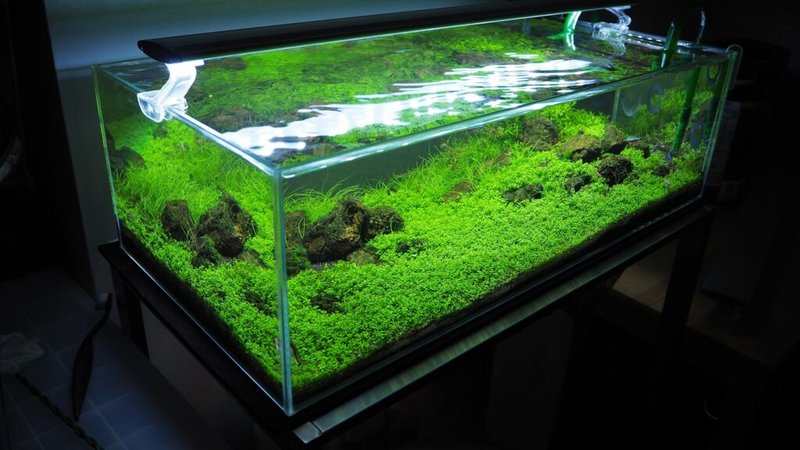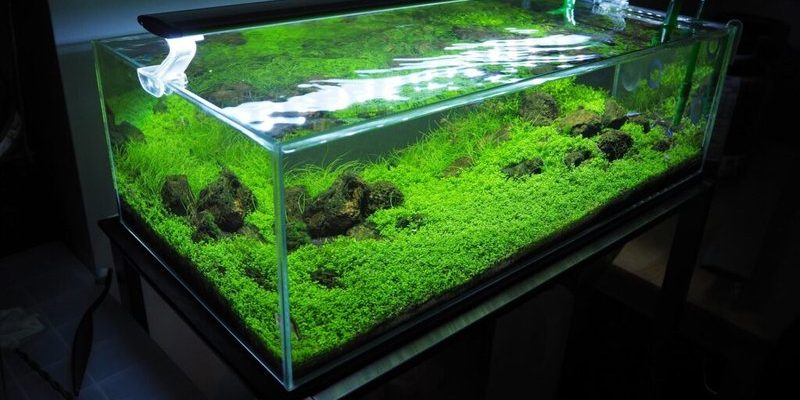
Imagine you’re setting up a cozy garden. You wouldn’t just throw seeds on hard ground and expect beautiful blooms, right? Just like soil in a garden nurtures plants, the substrate in your aquarium provides a habitat for beneficial bacteria, supports plant roots, and even helps with waste management. Let’s explore what the best substrates are for freshwater aquariums and why they matter.
Understanding Different Types of Substrate
Not all substrates are created equal, and they each serve different purposes in your aquarium. Broadly, we can categorize substrates into three main types: gravel, sand, and specialty substrates.
Gravel is a popular choice for many aquarium enthusiasts. It comes in various sizes and colors, making it visually appealing and versatile. The larger particles allow for good water flow, which helps prevent debris buildup. On the flip side, finer gravel can compact, potentially trapping waste.
Moving on, we have sand. It’s usually finer than gravel and gives an elegant look to your aquarium. Many fish, especially those from river environments, love to burrow in sand. However, sand can create anaerobic pockets if it’s too deep, which means it can cause dead zones in the substrate where bacteria thrive without oxygen.
Then there are specialty substrates, designed for specific needs like planted tanks or shrimp tanks. Brands like Fluval Stratum or Eco-Complete contain nutrients that support plant growth and can enhance the aesthetic of your aquarium.
Choosing Substrate Based on Fish and Plants
You might be wondering how your choice in substrate impacts the different species in your aquarium. Well, it makes a big difference! Each fish and plant has unique needs, and matching those with the right substrate is crucial.
For instance, if you’re keeping rooted plants like Amazon swords, you’ll want a nutrient-rich substrate to promote healthy growth. This is where specialty substrates shine. They often contain *nutrients* and *organic materials* that support plant roots directly.
On the other hand, if you’re focusing on species like corydoras catfish, which love to dig and root around, a mix of gravel and sand might be the way to go. The combination provides them with the necessary space to forage without getting stuck.
For shrimp tanks, a substrate like ADA Aquasoil can be beneficial. It’s specially formulated for these tiny critters, often enhancing their colors while providing a healthy environment.
The Importance of Substrate Depth
Now, let’s talk about depth. You might not think about how much substrate is in your tank, but it’s a crucial factor. Generally, a depth of about 1 to 2 inches is a good starting point for most aquariums.
Having a thicker layer can trap waste and create pockets where harmful bacteria thrive. This is where issues like *sulfur buildup* can happen, leading to a nasty smell and poor water quality.
However, if you’re setting up a planted tank, you might want deeper substrate areas, especially around plant roots. Just be careful to *gradually slope* the substrate so that it’s deeper near the back and shallower near the front. This creates a natural look and helps avoid stagnant water areas.
How to Clean and Maintain Your Substrate
Cleaning your substrate might sound daunting, but it doesn’t have to be. It’s an essential part of maintaining a healthy aquarium. Regular maintenance prevents algae growth and keeps the water quality high.
A good starting point is to use a gravel vacuum during water changes. This device helps suck up debris sitting at the bottom without sucking out most of your substrate. Focus on areas with visible waste and don’t worry about getting every last bit—it’s the *beneficial bacteria* that help break down waste you want to protect.
Also, consider not completely changing your substrate all at once. If you’re switching substrates or adding more, do it gradually. This way, beneficial bacteria have time to adjust to the changes.
Considerations for Choosing a Substrate
When choosing a substrate, you should think about a few important factors: *fish species*, *plant types*, *desired aesthetics*, and *maintenance level*. Each of these will guide your decision.
If you’re going for a low-maintenance tank that looks good, gravel is a strong option. It can come in various colors and doesn’t require frequent replacements. Just be sure to pick gravel that’s large enough to allow good water flow but small enough to accommodate the fish behavior.
Conversely, if you’re a plant enthusiast who loves lush greenery, a nutrient-rich specialty substrate will be your best friend. While they might require a little more maintenance, the rewards of seeing your plants thrive are worth it!
And let’s not forget the aesthetics. An appealing substrate can set the tone for your entire aquarium. Whether you prefer the natural look of sand or the vibrant colors of gravel, your choice will impact how you and your guests experience the tank.
Potential Issues with Substrate
It’s not all sunshine and roses in the substrate world. Each type has potential problems, so it’s essential to be aware of them.
For example, gravel can trap waste if it’s too fine or compacted, leading to poor water quality. Sand, while beautiful, can create anaerobic zones if it’s too deep, potentially harming your fish. If you notice a strange smell or murky water, it might be time to rethink your substrate choice.
Meanwhile, if using specialty substrates, monitor your water parameters closely. Some can alter pH levels, so it’s crucial to ensure it aligns with your fish and plant needs.
In summary, while substrates can create challenges, they can also significantly enhance your aquarium’s beauty and health.
Wrapping Up: Finding Your Perfect Substrate
Choosing the right substrate for your freshwater aquarium is like laying the foundation for your dream home. It’s essential to do some research and take time to find what works best for your specific setup. Remember, the best substrate isn’t just about looks; it’s about creating a thriving ecosystem that supports your fish and plants.
So, whether you go for gravel, sand, or a specialized product, be sure to consider the needs of your tank’s inhabitants. With the right substrate, you’ll foster a vibrant aquatic environment that’s as beautiful as it is healthy. Your journey into the world of aquarium keeping just got a little more exciting!

